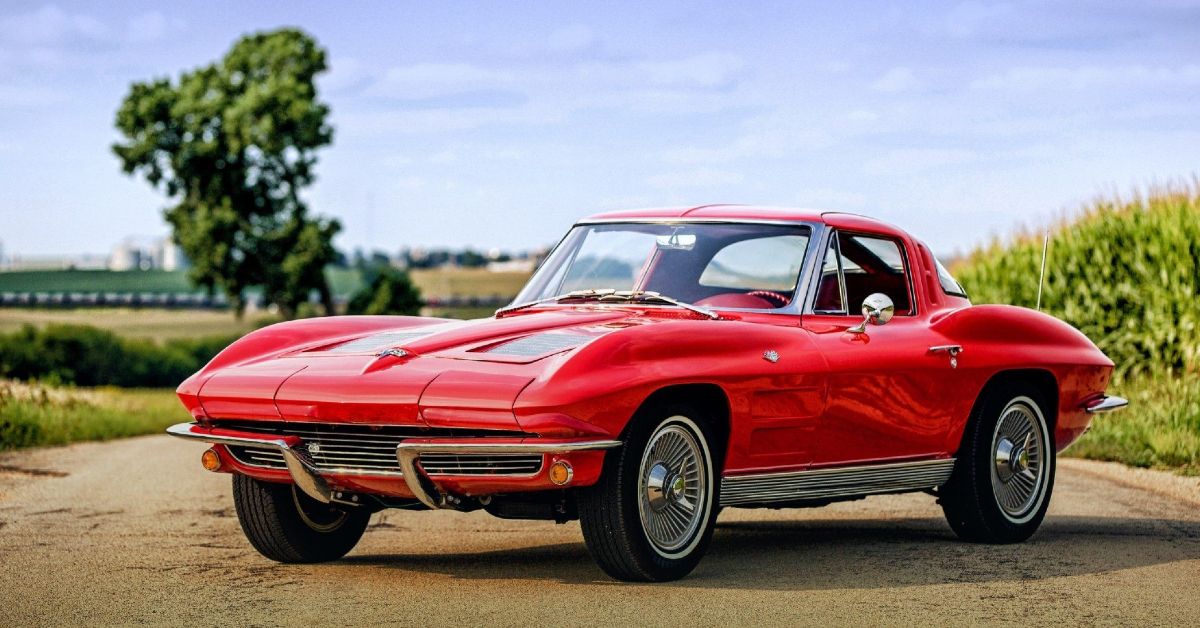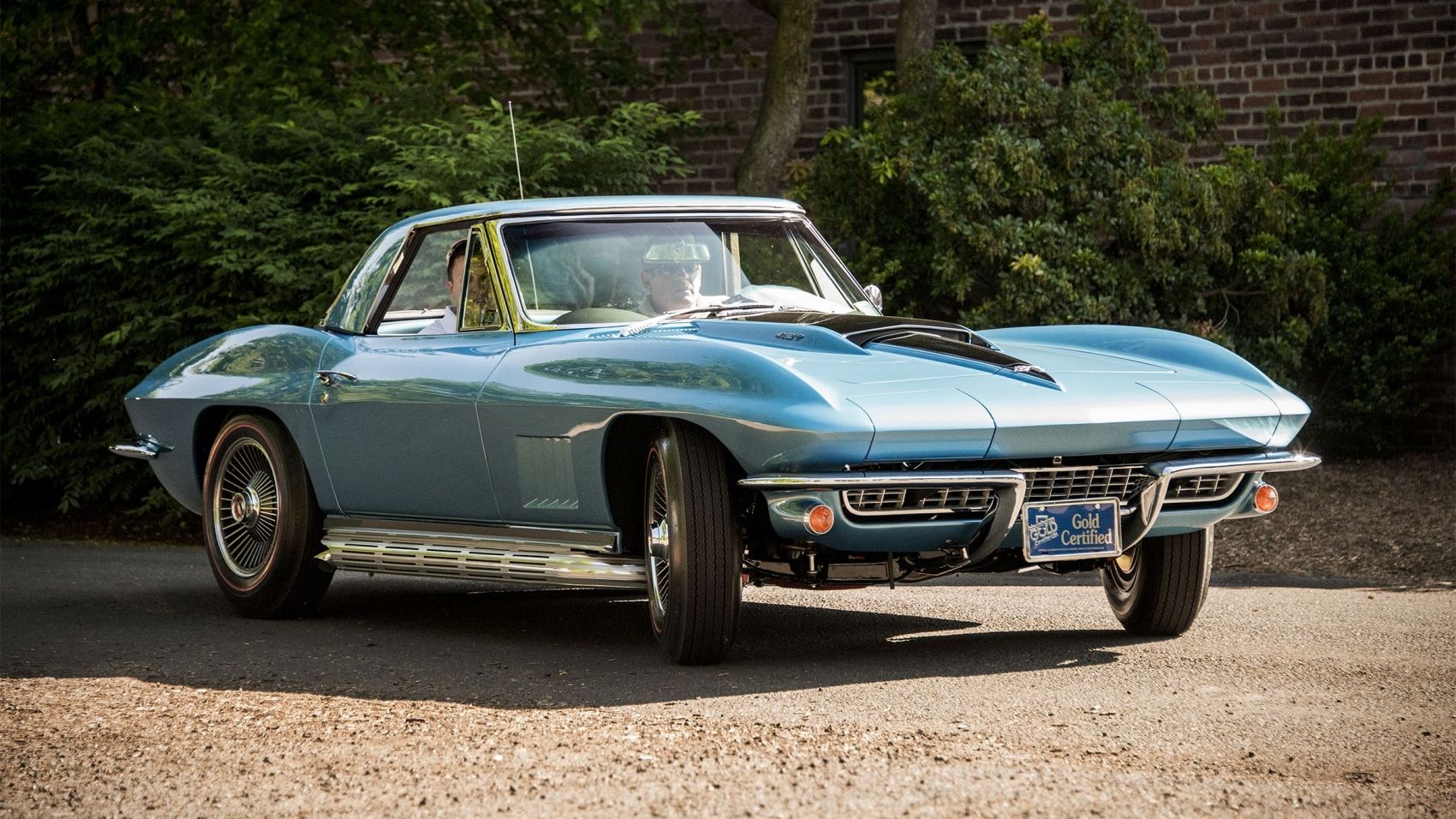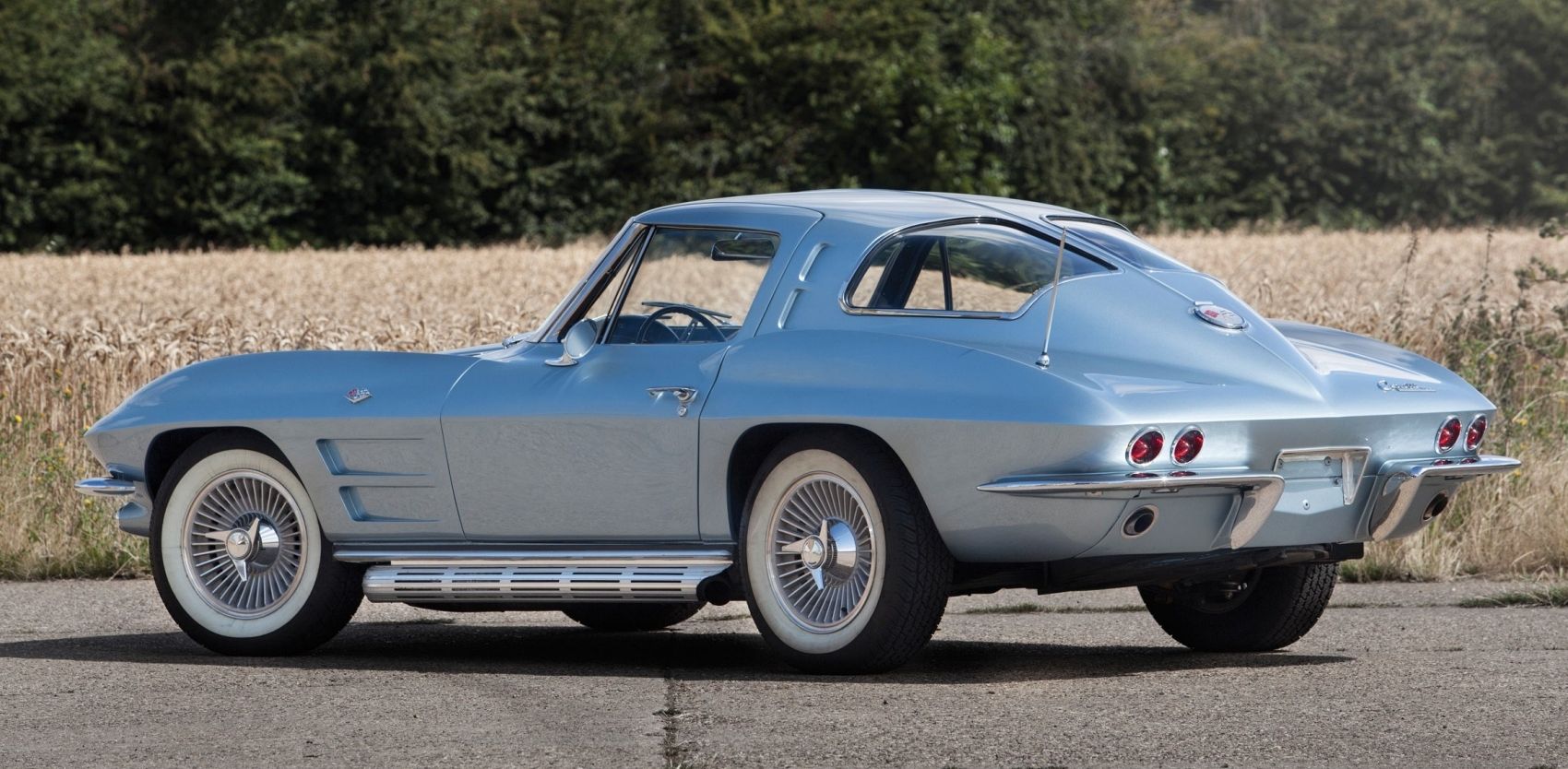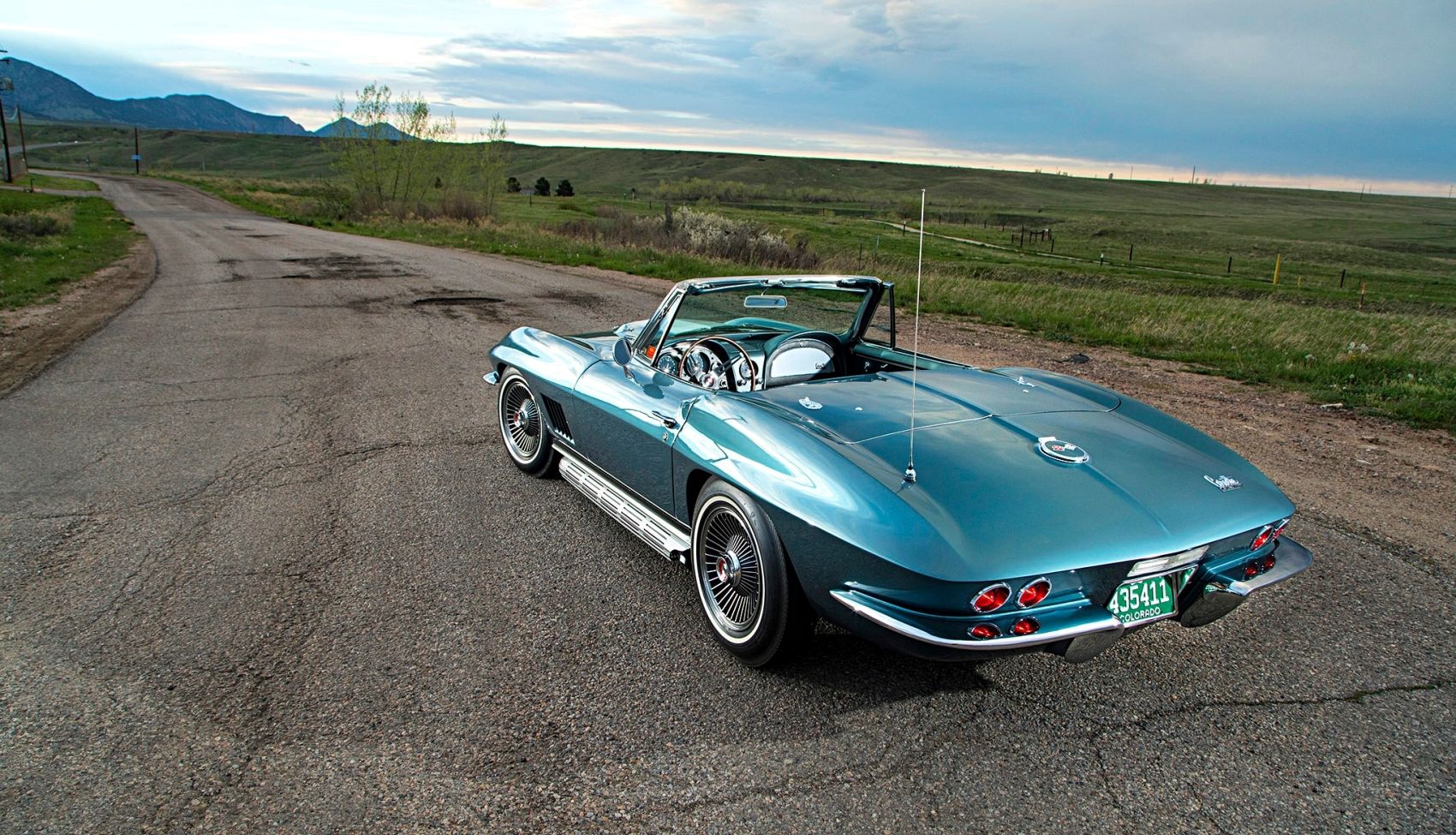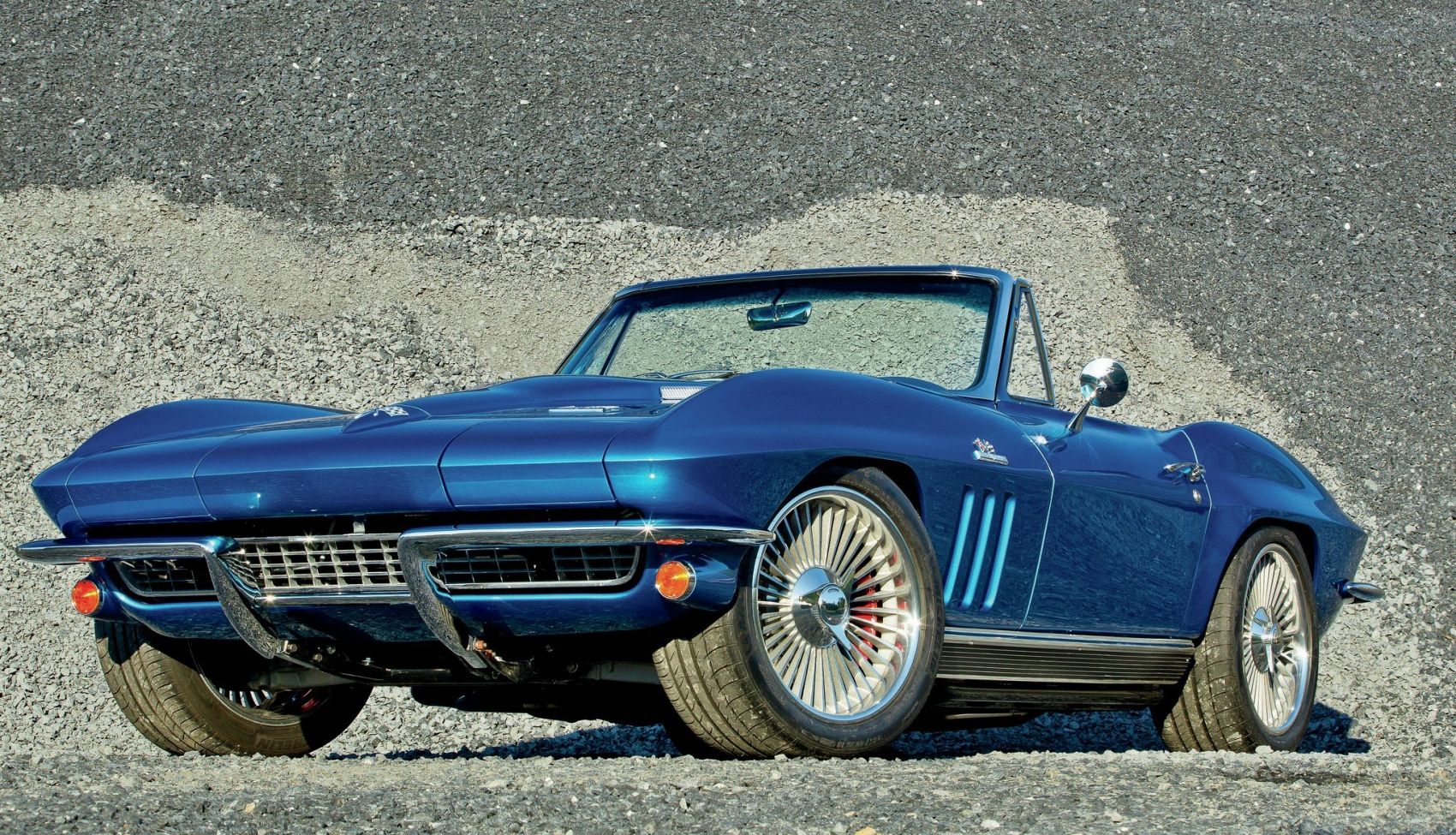The Corvette is the consensus #1 American sports car. Period. The country that brought us completely nutrient-deficient white bread and cheese you can spray out of an aerosol can, also provided us with one of the greatest sports cars of all time. With a production run spanning over six and a half decades, the Chevrolet Corvette has assumed many forms and donned many skins, but has nearly always prided itself on offering menacing straight-line power at a relatively reasonable price. Unlike some other sports cars, GM was never satisfied with straight-line power, and instead also worked hard to provide drivers with a level of stability that kept all four corner rubbers contacting the ground during turns and bumps.
The second Corvette iteration, dubbed C2, remains arguably one of the most striking automotive designs ever created. In fact, the 1963 Corvette Sting Ray was received so well by the general public, GM was presented with Car Life magazine's Award for Engineering Excellence.
Despite its short five year production run from 1963-1967, the C2 featured a slew of iconic design elements and mechanical firsts that place it in the upper echelon of all-time classics.
Futuristic Styling
Inspiration for the C2's radical design came from the XP-755 Mako Shark concept car, designed by Larry Shinoda with direction from GM Styling and Design head Bill Mitchell. The production version flattened the front end somewhat from the triangular nose of the concept, but the C2 still has an overhanging front fender/engine compartment that obscures the chrome bumper and grille, which actually sits below and behind the hood.
The original Sting Ray (changed to Stingray in '69), represented many iconic firsts for GM. While the original 'vette had exposed round headlights, the C2 was the first to feature folding, hidden pop-up quad lights; a special Corvette detail utilized all the way until the '05 C6 was introduced. These pop-ups were initially powered by individual electric motors, but were changed to vacuum-powered for the C3 and beyond.
One of the reasons the '63 'vette is so highly coveted by collectors is the split rear window. Ironically Bill Mitchell fought for this design cue to be included, but initial press reviews heavily criticized it as being a failure due to it potentially obscuring the driver’s rear view (also they just didn't like the way it looked). Pressure from GM executives finally convinced Mitchell to throw the white flag, and all subsequent 'vettes came with a heavily curved but more 'normal', single rear glass pane.
The '65-'67 'vettes featured another incredible design cue officially named the RPO N14. More commonly referred to as 'side pipes' or the side mount exhaust system, there's some controversy surrounding whether they could possibly hamper performance slightly. Hhowever there's no disputing the thunderous rumble and amazing visual aesthetic those chrome pipes add to the C2.
Futuristic Engineering
The very first Corvette was a sleek little sports car that featured a solid live-axle rear end and V6 power (yes V6) for the first two years. Once Zora Arkus-Duntov sunk his teeth into the project, the former head Corvette engineer who is often referred to as the 'Father of the Corvette' set out to make the 'vette a race-track terror. All C2's had the potential for big V8 power starting with an optional 360 hp in ’63, but '65 was a landmark year for Corvette with the introduction of their first big-block V8. The 396 cubic-inch L78 could push 425 screaming HP through the rear wheels, but that wasn't even the most powerful option. In '67, the final year of C2 production, the 427 L88 with Rochester Tri-Force carburetors was available to a select few adrenaline junkies. This monster required 103-octane racing fuel, and though it was officially rated at 430 HP, many third party aficionados put it closer to 560 horses.
Not satisfied with just straight-line power, the '63 C2 was the first 'vette with a fully independent rear suspension. It utilized u-joints, half shafts and transverse leaf springs, the latter of which lasted for 55 more model years. The RPO Z06 competition-oriented package was available to buyers who first ordered a 'fuelie' (fuel-injected) coupe with a 4-spd manual transmission and a positraction limited-slip differential. The Z06 upgrades included top of the line brakes, a heavy-duty front stabilizer bar, stronger shocks, much stiffer springs, and a dual master cylinder.
The '65 was the first 'vette and one of the first U.S.-made cars with full four-wheel disc brakes. At the time only the Studebaker Avanti also had them (the uber-popular Ford T-Bird featured front discs only).
The C2 had almost twice as much steel as the C1, but actually weighed less thanks to much thinner fiberglass outer panels which by the way, almost never rust. Despite its nickname the 'birdcage', the coupe's steel sub-frame was 90 percent stiffer than the C1. The resulting far superior ride and handling were made even better because 80 more pounds were shuttered over the rear wheels for optimum balance.
In truth, there isn't enough space to list all the ways the C2 Corvette was a ground-breaking, blood-boiling piece of automotive genius. Regardless of the facts and figures, what truly matters is how a car makes you feel when you look at it, sit in it, rev it up then let it propel you down the road at break-neck speeds. For collectors everywhere, nothing does it better than the C2.

